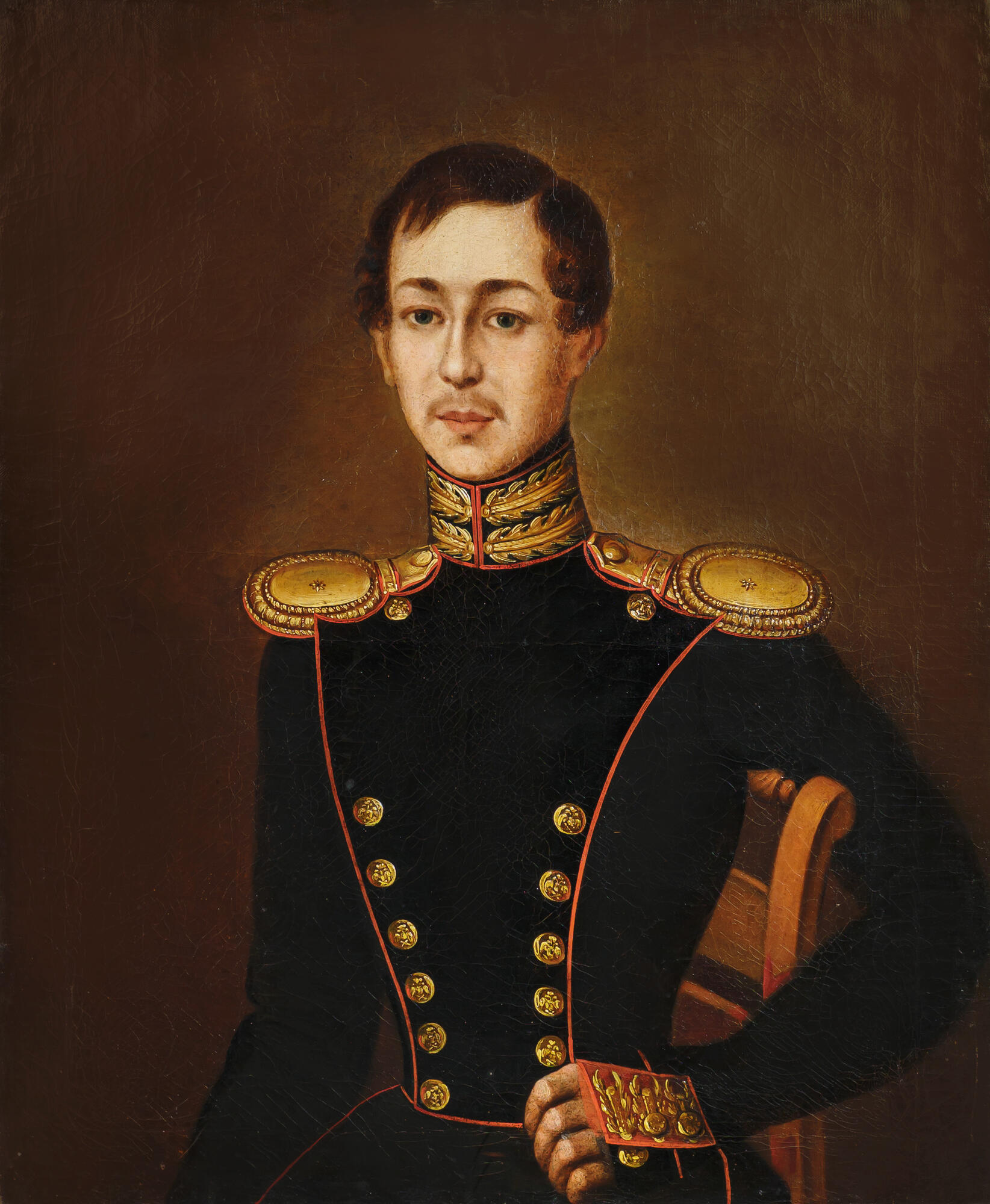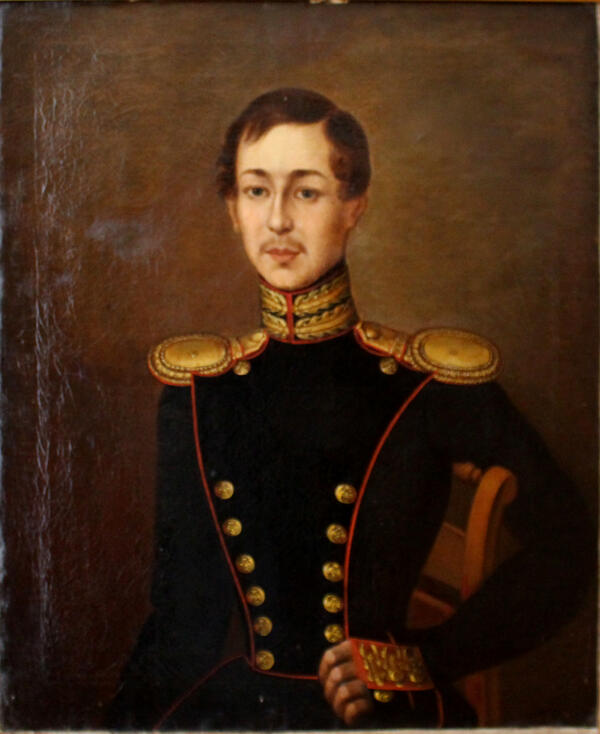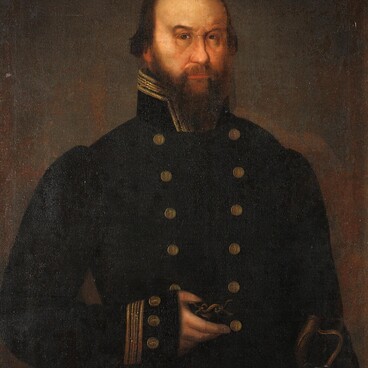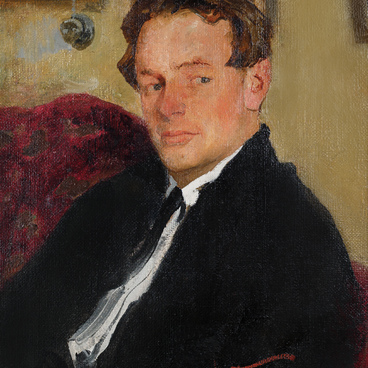The portrait of Sergey Alexandrovich Cheremisinov, an artillerist of the Imperial Guard, entered the museum after the nationalization of the Cheremisinov estate in 1918. The estate was located in the village of Rodichevo on the left bank of the Volga, just over 20 kilometers away from Uglich. The Rodichevo estate used to belong to Sergey’s grandmother — Alexandra Mikhailovna Cheremisinova, née Pyatova — who became its owner even before getting married. Both Sergey and his brother Dmitry graduated from the Mikhailovskoye Artillery School, however, Sergey retired early due to poor health and lived at the estate for some time. After he died of consumption, the Rodichevo estate was inherited by his brother Dmitry, and later by their sister Lidiya Alexandrovna (married name Kalachyova).
There is very little information about the “Cheremisinov” period in the history of the village: the local archive contains documents related to the marking of land plots and litigation with the neighbors. The new owners of the village were the Kalachyovs and in the next generation — the Cherkasovs. In the early 20th century, Boris Pavlovich Cherkasov, the son-in-law of the Kalachyovs, built a new wooden manor house there which became a local sight of attraction because of its unique design resembling a Swiss chalet. The territory also included another unusual building — the “concrete house” — and a park with linked ponds. However, the golden age of the manor was not destined to last long. After the nationalization and removal of the family’s possessions, the wooden house stood empty and soon burned down along with a large library.
Receiving the items from manor houses of the neighboring villages Rodichevo and Shishkino, Alexander Konstantinovich Gusev, the director and custodian of the Uglich Museum, had to do a lot of work to preserve the integrity of family collections. Often, he was forced to restore paintings on his own. The portraits of the Cheremisinovs — the artillerist brothers and their parents — also bear the marks of such “home treatment”. The portraits of the married couple were partly distorted with overpaint and were later restored by professional artists.
Nowadays, there is not much in Rodichevo that reminds of the manor house era: the “concrete house” is lived in and is being reconstructed using private funds, while some remains of the park and the birch alley can be seen.
There is very little information about the “Cheremisinov” period in the history of the village: the local archive contains documents related to the marking of land plots and litigation with the neighbors. The new owners of the village were the Kalachyovs and in the next generation — the Cherkasovs. In the early 20th century, Boris Pavlovich Cherkasov, the son-in-law of the Kalachyovs, built a new wooden manor house there which became a local sight of attraction because of its unique design resembling a Swiss chalet. The territory also included another unusual building — the “concrete house” — and a park with linked ponds. However, the golden age of the manor was not destined to last long. After the nationalization and removal of the family’s possessions, the wooden house stood empty and soon burned down along with a large library.
Receiving the items from manor houses of the neighboring villages Rodichevo and Shishkino, Alexander Konstantinovich Gusev, the director and custodian of the Uglich Museum, had to do a lot of work to preserve the integrity of family collections. Often, he was forced to restore paintings on his own. The portraits of the Cheremisinovs — the artillerist brothers and their parents — also bear the marks of such “home treatment”. The portraits of the married couple were partly distorted with overpaint and were later restored by professional artists.
Nowadays, there is not much in Rodichevo that reminds of the manor house era: the “concrete house” is lived in and is being reconstructed using private funds, while some remains of the park and the birch alley can be seen.



